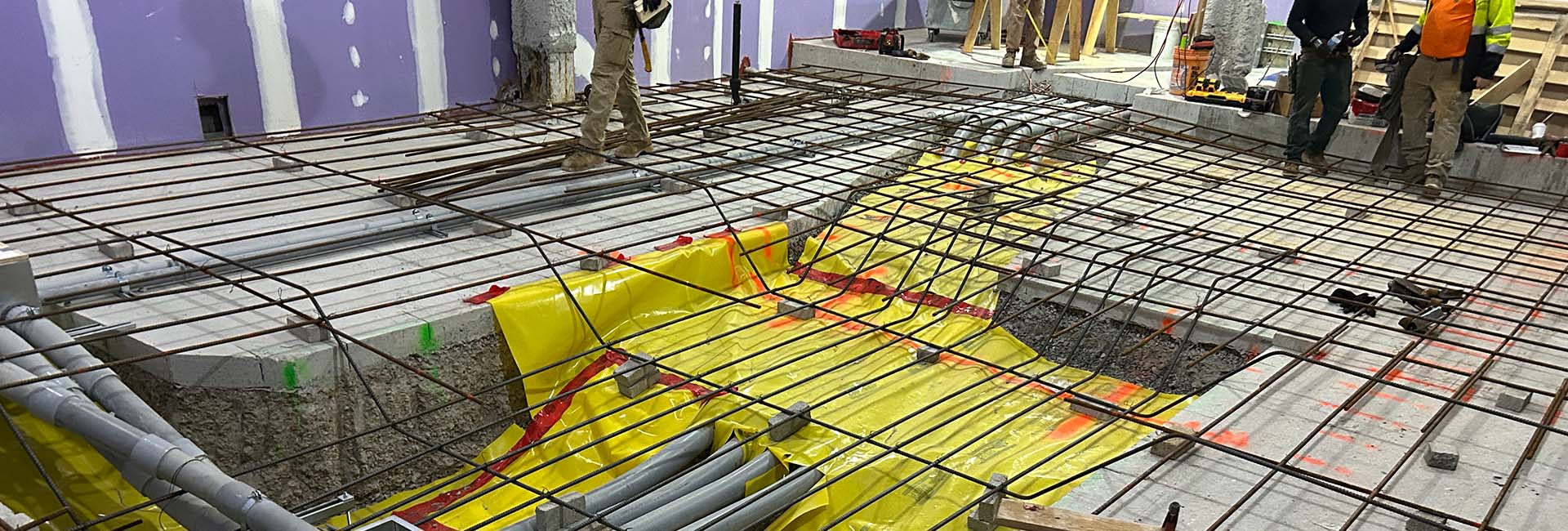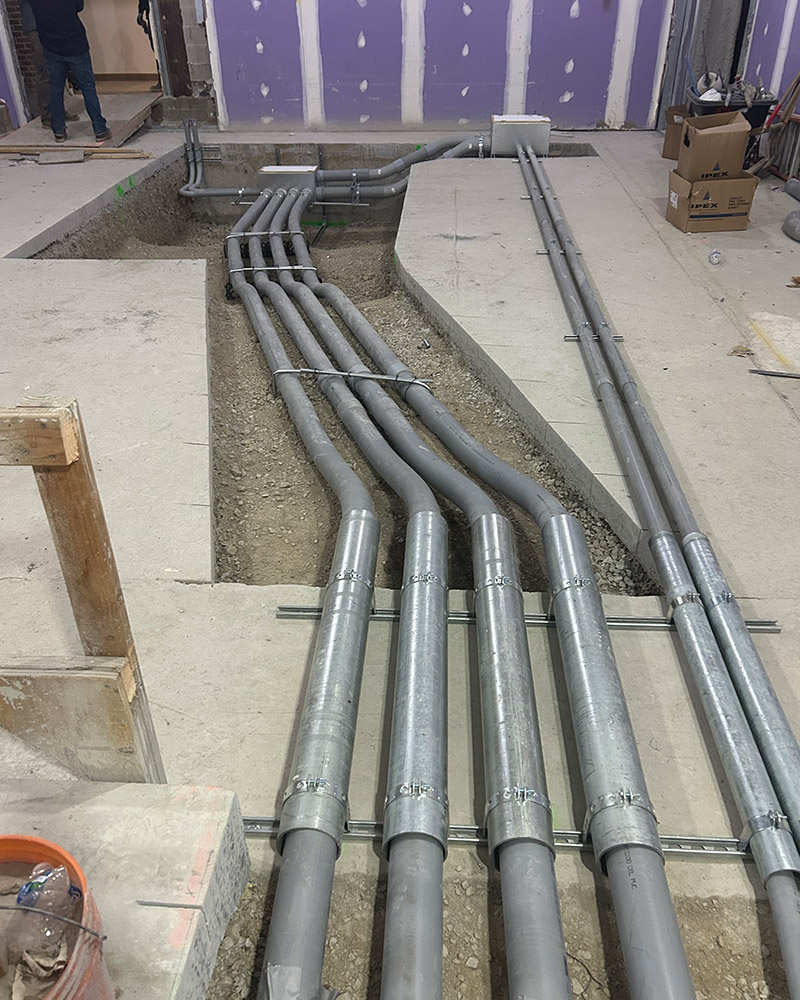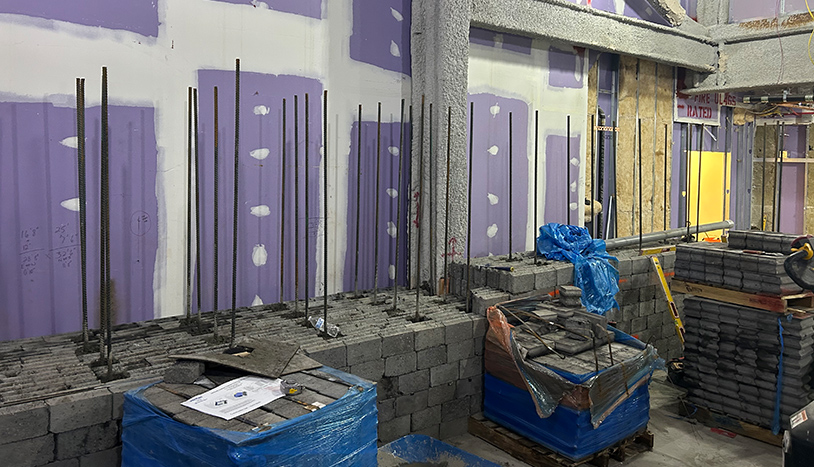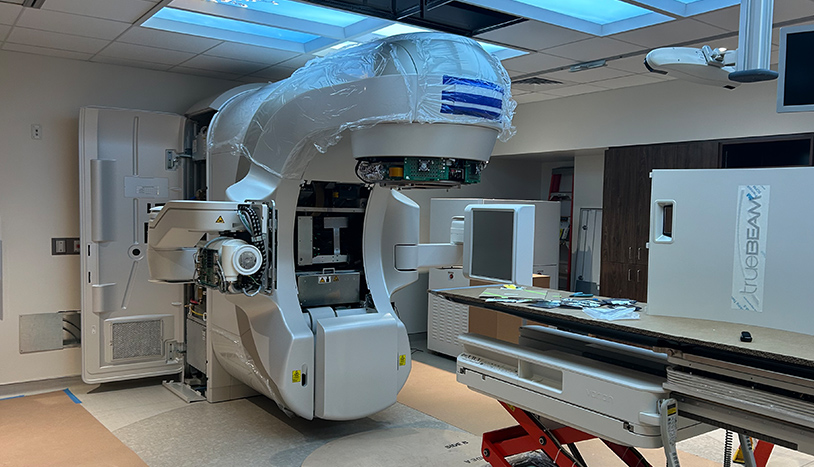The timeline was ambitious—but well-coordinated teamwork and carefully tailored strategy ultimately prevailed, allowing for the fast-tracked completion of Project Epimetheus for Penn Medicine in Philadelphia’s University City. This has already made an impact on cancer care for Penn, allowing one of the world leaders in oncology to continue to provide top level care for its patients.

The new linear accelerator (linac) treatment room—built in just three and a half months—is part of the larger Project Atlas expansion, another large investment in the future of radiation oncology at Penn.
Designed to ensure uninterrupted patient care during upgrades to an existing machine, the facility delivers a critical new treatment option while positioning Penn as a leader in advanced oncology technology.
“They wanted this room up and running to see patients as soon as possible—that was the goal,” says Nick Bonacci, superintendent at LF Driscoll. “We were putting together a schedule without knowing the exact timeframes of certain elements. Everything had to fall in place, on our end, the owner’s end, and the vendor’s end.”
PROJECT DETAILS:
Location: Philadelphia, PA
Size: 1,200sf
Client: Penn Medicine
Architect: Stantec
Engineer: BR+A
Sector: Healthcare
Completion: July 2025
THE IPD WAY
The story of Project Epimetheus began with Penn Medicine’s radiation oncology department. For years, its suite had included one active linac and an unfinished shell space reserved for future expansion. When an equipment vendor approached the department with the opportunity to bring a next-generation treatment application to market, the hospital seized it—on one condition: the room had to be completed in record time.
Executing the project under such constraints required a high-trust, collaborative approach. Fortunately, Project Epimetheus was part of Penn’s larger Project Atlas initiative, already structured as an integrated project delivery (IPD) job.
shielding material through public spaces was impractical. With their sister LFD project team in the demolition phase of the future Roberts Proton Therapy Center right behind them, the team was able to use that space for direct access into the building. At the same time, the team was looking at lead times of two to three months for finishes like flooring and millwork and leveraging BIM coordination and weekly walk-throughs with the vendor to get the work done in the short turnaround time. Shifting the delivery of the linac to the front of the schedule was critical, and the collaboration culture of IPD made it work.
“Everyone gave a little bit,” says Julia Macchione, project manager at LF Driscoll. “Many of our subs worked overtime and second shifts to meet the schedule. But everyone understood the stakes.”



“Using an IPD approach for renovations is somewhat unchartered territory,” Vincent Fitzgerald says. “With a traditional delivery method, there’s no possible way that project could have been completed within that time constraint. IPD created a willingness to solve an issue by all means possible— whatever it took.”
“That’s what’s great about IPD,” says Bonacci. “You can offer up an idea that may change the plan, and no one takes it as a criticism. We’ve all agreed to listen to each other’s ideas for the good of the project, so it’s easier to get consensus on critical decisions.”
Vincent Fitzgerald, LF Driscoll senior project manager, echoed these sentiments, noting that using IPD was crucial in meeting the project’s goals, considering the remarkably tight timeframe.
ALL FOR ONE
That culture of teamwork also made all the difference for site challenges like logistics and procurement. The project unfolded in the heart of Penn Presbyterian Medical Centers’ active hospital campus, where moving tons of
WHATEVER IT TAKES
Though Project Epimetheus is now complete, it is only one piece of the broader expansion. Adjacent to the linac suite, LF Driscoll and its partners are constructing one of the world’s most advanced proton therapy centers, slated to open in 2027. As the first institution to bring this type of new proton technology in a side-by-side configuration, the project Penn at the forefront of radiation oncology innovation.
“Project Epimetheus may be a small piece of a larger initiative, but its impact will be far-reaching,” says Bryan Heigh, senior project manager at Penn Medicine. “For us, the success of this project represents not only a construction achievement, but a reaffirmation of our mission to bring the most advanced care to patients without delay.”
ZERO PUNCHLIST
LF Driscoll met the tight deadline without sacrificing safety or quality. The team completed the project with zero punchlist items!
